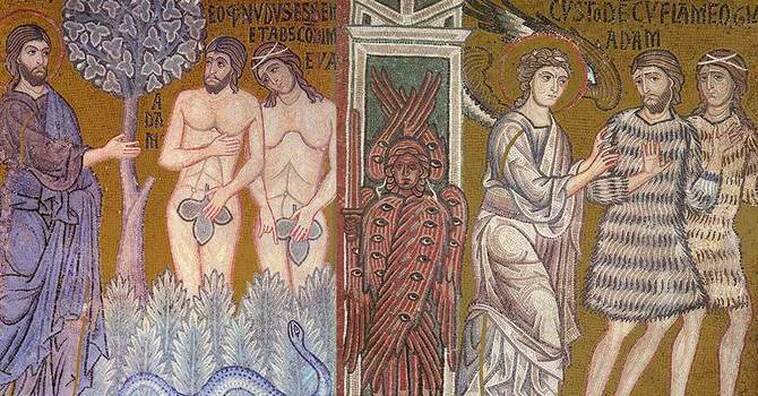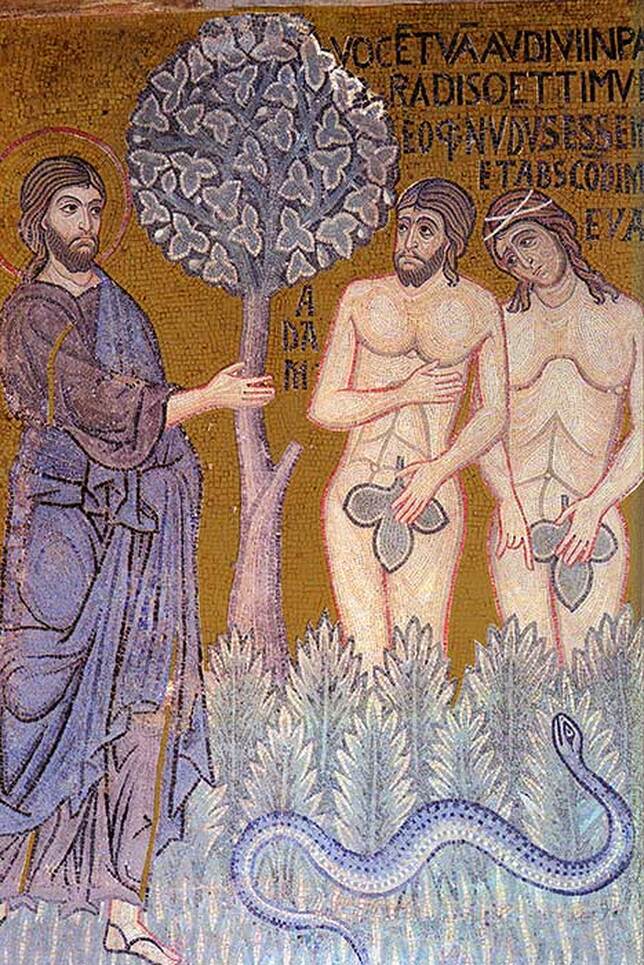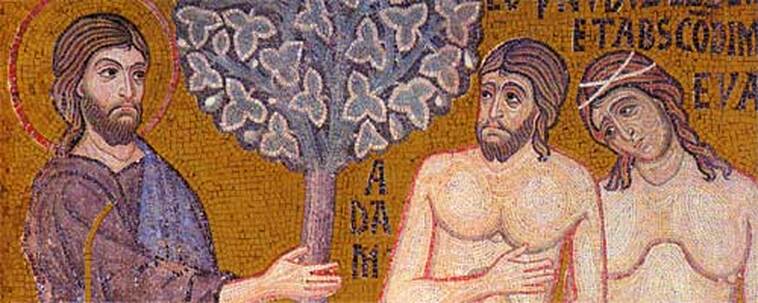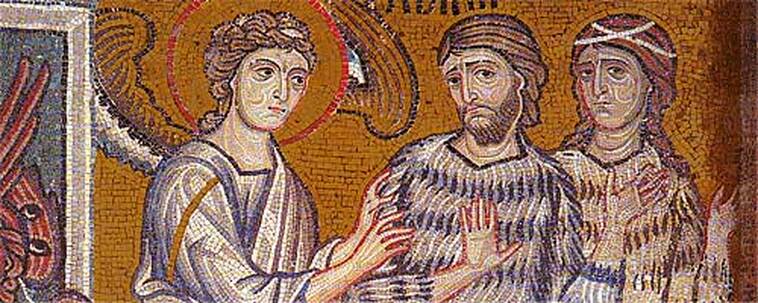Also Known as Cheesefare Forgiveness (Cheesefare) Sunday Introduction The Sunday of Forgiveness is the last Sunday prior to the commencement of Great Lent. During the pre-Lenten period, the services of the Church include hymns from the Triodion, a liturgical book that contains the services from the Sunday of the Publican and the Pharisee, the tenth before Pascha (Easter), through Great and Holy Saturday. On the Sunday of Forgiveness, focus is placed on the exile of Adam and Eve from the Garden of Eden, an event that shows us how far we have fallen in sin and separated ourselves from God. At the onset of Great Lent and a period of intense fasting, this Sunday reminds us of our need for God’s forgiveness and guides our hearts, minds, and spiritual efforts on returning to Him in repentance. Biblical Story The Sunday of Forgiveness, the last of the preparatory Sundays before Great Lent, has two themes: it commemorates Adam’s expulsion from Paradise, and it accentuates our need for forgiveness. There are obvious reasons why these two things should be brought to our attention as we stand on the threshold of Great Lent. One of the primary images in the Triodion is that of the return to Paradise. Lent is a time when we weep with Adam and Eve before the closed gate of Eden, repenting with them for the sins that have deprived us of our free communion with God. But Lent is also a time when we are preparing to celebrate the saving event of Christ’s death and rising, which has reopened Paradise to us once more (Luke 23:43). So sorrow for our exile in sin is tempered by hope of our re-entry into Paradise. The second theme, that of forgiveness, is emphasized in the Gospel reading for this Sunday (Matthew 6:14-21) and in the special ceremony of mutual forgiveness at the end of the Vespers on Sunday evening. Before we enter the Lenten fast, we are reminded that there can be no true fast, no genuine repentance, no reconciliation with God, unless we are at the same time reconciled with one another. A fast without mutual love is the fast of demons. We do not travel the road of Lent as isolated individuals but as members of a family. Our asceticism and fasting should not separate us from others, but should link us to them with ever-stronger bonds. The Sunday of Forgiveness also directs us to see that Great Lent is a journey of liberation from our enslavement to sin. The Gospel lesson sets the conditions for this liberation. The first one is fasting—the refusal to accept the desires and urges of our fallen nature as normal, the effort to free ourselves from the dictatorship of the flesh and matter over the spirit. To be effective, however, our fast must not be hypocritical, a “showing off.” We must “appear not unto men to fast but to our Father who is in secret” (vv. 16-18). The second condition is forgiveness—“If you forgive men their trespasses, your Heavenly Father will also forgive you” (vv. 14-15). The triumph of sin, the main sign of its rule over the world, is division, opposition, separation, hatred. Therefore, the first break through this fortress of sin is forgiveness—the return to unity, solidarity, love. To forgive is to put between me and my “enemy” the radiant forgiveness of God Himself. To forgive is to reject the hopeless “dead-ends” of human relations and to refer them to Christ. Forgiveness is truly a “breakthrough” of the Kingdom into this sinful and fallen world. Icon of the Feast The icon of the Sunday of the Last Judgment incorporates all of the elements of the parable from Matthew 25:31-46. Christ sits on the throne and before him the Last Judgment takes place. He is extending his hands in blessing upon the Theotokos on his right, and John the Baptist on his left. Seated on smaller thrones are the Apostles, represented by Peter and Paul, a depiction of the words of Christ in Matthew 19:28. (1.) The icon shows Adam and Eve standing before Jesus Christ. Prior to their descent into sin through disobedience, Adam and Eve were blessed with a beautiful relationship of communion and fellowship with God. However, they were tempted by the devil appearing in the form of a serpent to disobey God and eat from the tree of the knowledge of good and evil (Genesis 2:15-17). When they took of the fruit and sinned, they realized that they were naked. Further, when “they heard the sound of the Lord God walking in the garden”…they hid themselves “from the presence of the Lord” (3:8). The icon shows Adam and Eve attempting to cover themselves with fig leaves as they try to hide, and yet they stand ashamed before the Lord. Because of their disobedience the Lord expelled them from the garden. The icon shows the Archangel of the Lord directing them out of Paradise, through the gate of Eden where God placed “the cherubim and a sword flaming and guarding the way to the tree of life” (3:23-24). Adam and Eve are dressed in the garments of skins made for them by God (3:20). Orthodox Christian Celebration of the Sunday of Forgiveness The Sunday of Forgiveness is commemorated with the Divine Liturgy of Saint John Chrysostom, which is preceded by the Matins service. A Great Vespers is conducted on Saturday evening. The hymns of the Triodion for this day are added to the usual prayers and hymns of the weekly commemoration of the Resurrection of Christ. The naming of the Sunday is taken from the commemoration of the Exile of Adam and Eve from Paradise and from the Gospel reading of the Divine Liturgy. Scripture readings for the Sunday of the Last Judgment are: At the Orthros (Matins): The prescribed weekly Gospel reading. At the Divine Liturgy: Romans 13:11-14:4, Matthew 6:14-21. The Sunday of Forgiveness is also known as Cheesefare Sunday. This is the last day that dairy products can be eaten before the Lenten fast. The full fast begins the following day on Clean Monday, the first day of Great Lent. On the evening of the Sunday of Forgiveness, the Church conducts the first service of Great Lent, the Vespers of Forgiveness, a service that directs us further on the path of repentance and helps us to acknowledge our need for forgiveness from God and to seek forgiveness from our brothers and sisters in Christ. This is the first time that the Lenten prayer of St. Ephraim accompanied by prostrations is read. At the end of the service all the faithful approach the priest and one another asking for mutual forgiveness. Orthodox Christians are encouraged to enter Great Lent in repentance and confession by attending these services, coming for the Sacrament of Confession, and dedicating themselves to worship, prayer, and fasting throughout the Lenten period. The first day of Lent, Clean Monday, signifies the beginning of a period of cleansing and purification of sins through repentance. On the Saturday before this Sunday, the second of three Saturdays of the Souls are held. This is a special commemoration when the Church offers a Divine Liturgy and Memorial Service for the departed faithful. This is considered a universal commemoration of the dead. Through the memorial services, the Church is commending to God all who have departed and who are now awaiting the Last Judgment. This specific Saturday is a general commemoration of all the ascetic Saints of the Church, both men, and women. As we set out on the Lenten fast we are reminded that we will make this journey as members of a family, supported by the intercessions of the Saints. Hymns and Prayers of the Feast of the Prodigal SonExapostelarion of Matins (Tone Two) Wretch that I am I disobeyed Your good commandment, O my Lord. And being stripped of Your glory, alas, with shame I am laden. And I have been evicted from the pure delights of Paradise. O merciful and compassionate, have mercy on me who rightly has been deprived of Your goodness. We were expelled of old, O Lord, from the Garden of Eden, for wrongly eating from the tree. But, O my God and Savior, You once again have restored us through Your Cross and Your Passion. Thereby, O Master, fortify and enable us purely to finish Lent and to worship Your holy resurrection, Pascha our saving Passover, by the prayers of Your Mother. Prokeimenon of Vespers (Tone Plagal Fourth) Idiomela: Turn not away Thy face from Thy child for I am afflicted; hear me speedily. Draw near to my soul and deliver me. Stichos: Thy salvation, O God, hath set me up. The poor see and rejoice. Kontakion (Tone Plagal Second) O Master, Guide to wisdom, Giver of prudent counsel, Instructor of the foolish and Champion of the poor, make firm my heart and grant it understanding. O Word of the Father, give me words, for see, I shall not stop my lips from crying out to Thee: I am fallen, in Thy compassion have mercy on me. References The Lenten Triodion. translated by Mother Mary and Kallistos Ware (South Canaan, PA: St. Tikhon’s Seminary Press, 1994), pp. 46-47, 168-188.
Schmemann, Alexander. Great Lent: Journey to Pascha (Crestwood, New York: St. Vladimir’s Seminary Press, 1969), pp. 27-30. Barrois, Georges. Scripture Readings in Orthodox Worship (Crestwood, New York: St. Vladimir’s Seminary Press, 1977), pp. 29-30. Farley, Donna. Seasons of Grace: Reflections on the Orthodox Church Year (Ben Lomond, CA: Conciliar Press, 2002), pp. 87-90.
0 Comments
Leave a Reply. |
AuthorArchives
October 2021
Categories |





 RSS Feed
RSS Feed